Open-Source LLM Frameworks: Cost Comparison
Explore the hidden costs of open-source LLM frameworks, comparing their infrastructure needs, licensing models, and community support for informed decisions.

When choosing an open-source large language model (LLM) framework, understanding the true costs is critical. While these frameworks are labeled as "free", expenses like infrastructure, licensing, scaling, and support can significantly impact your budget. Here's a quick breakdown of the key considerations:
- LLaMA 3: Custom license with restrictions; high GPU and memory needs; strong community but no official support.
- Falcon 180B: Apache 2.0 license; requires enterprise-grade GPUs; smaller community, higher scaling costs.
- Mixtral 8x22B: Apache 2.0 license; uses a mixture-of-experts design to lower costs; growing community support.
- Yi-34B-Chat: Apache 2.0 license; moderate costs; limited community and support options.
- Mistral: Dual licensing (open-source and commercial); efficient on standard GPUs; strong community and optional enterprise support.
Key Takeaway: Smaller businesses may prefer frameworks like Mistral or Mixtral 8x22B for their cost efficiency and flexibility. Larger enterprises with complex needs might consider Falcon 180B or LLaMA 3 but should prepare for higher costs. Always evaluate licensing, infrastructure, and scaling requirements before making a decision.
Quick Comparison:
| Framework | License | Infrastructure Needs | Ongoing Costs | Support Options |
|---|---|---|---|---|
| LLaMA 3 | Custom | High (GPU clusters) | High | Community-driven only |
| Falcon 180B | Apache 2.0 | Very High | High | Limited formal support |
| Mixtral 8x22B | Apache 2.0 | Moderate | Variable | Growing community |
| Yi-34B-Chat | Apache 2.0 | Moderate | Moderate | Smaller community |
| Mistral | Dual licensing | Low | Low | Strong community + paid |
The right choice depends on your budget, technical expertise, and deployment goals.
1. LLaMA 3
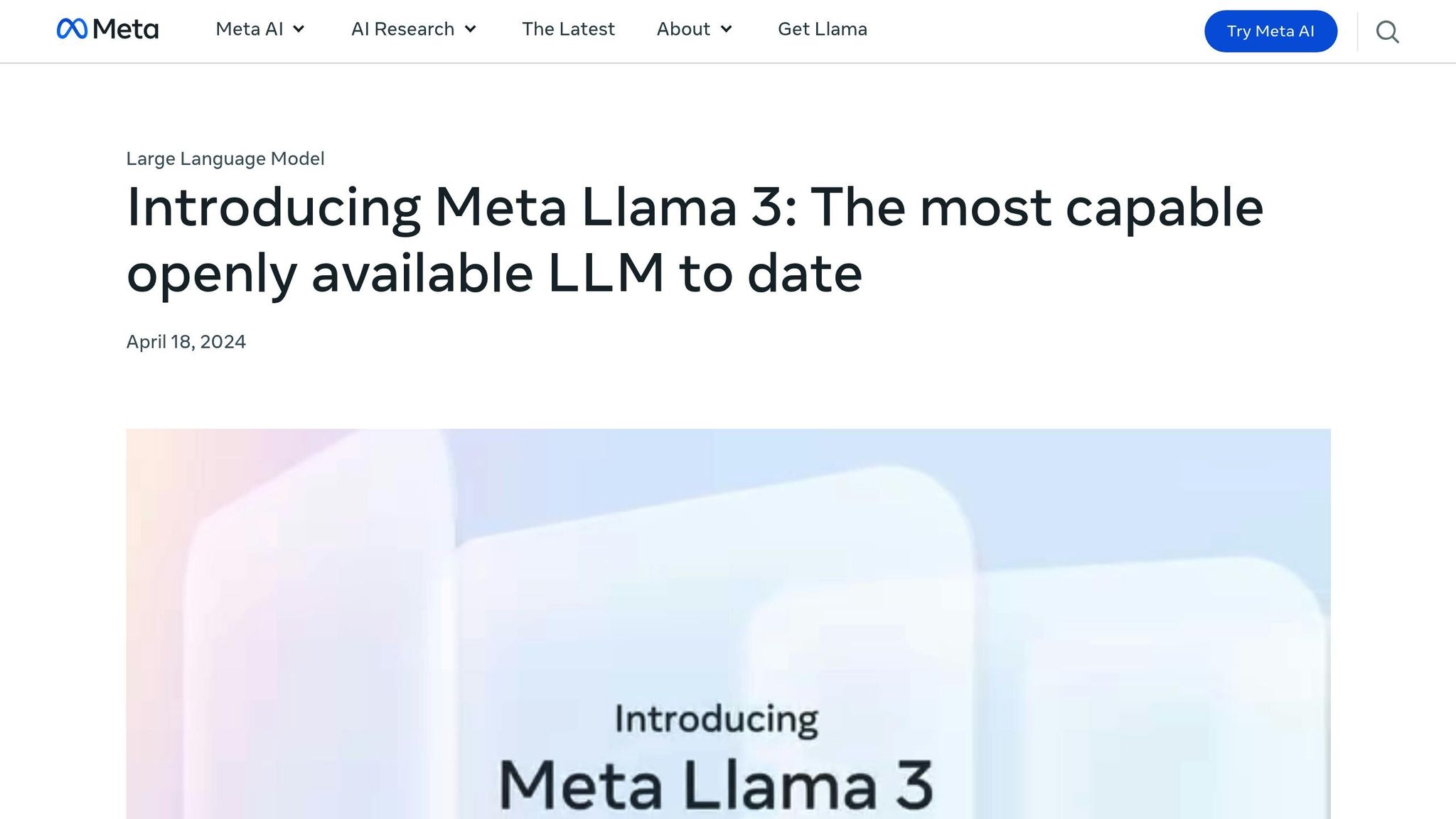
Meta's LLaMA 3 represents a major step forward in open-source language models, improving performance and drawing significant attention across industries. To deploy LLaMA 3 effectively, understanding its associated costs is crucial. Below, we break down the key factors influencing its cost structure to help guide deployment decisions.
Licensing Models
LLaMA 3 operates under a custom license from Meta, which sets it apart from more familiar open-source licenses like MIT or Apache 2.0. This license allows commercial use across various applications but imposes restrictions for large-scale deployments. It also requires proper attribution and prohibits using LLaMA 3's outputs to train competing language models. While these terms don’t directly involve monetary costs, they can impact workflows and require legal scrutiny. These licensing specifics play a critical role in shaping how developers and organizations approach LLaMA 3's implementation.
Infrastructure Costs
Running LLaMA 3 can be resource-intensive. The smaller models require moderate GPU memory for inference, but larger versions often demand multiple high-performance GPUs or specialized hardware to operate efficiently. Cloud deployment adds another layer of expense, with costs varying based on the type of hardware and usage patterns. Beyond computational needs, storage requirements for backups, caching, and model quantization contribute to the overall operational costs. These factors should be carefully considered when budgeting for deployment.
Scalability
LLaMA 3 supports advanced optimization techniques like quantization and distributed inference, which help enhance scalability. However, these optimizations can introduce additional costs, particularly when dealing with larger models. Memory bandwidth can become a limiting factor, and the significant memory demands may lead to longer instance spin-up times, especially in auto-scaling environments. These delays and resource constraints can affect long-term operational costs, making scalability a key consideration for production use.
Community and Support
One of LLaMA 3's strengths lies in its active community, which offers a wealth of resources to streamline deployment. Community-developed optimization libraries and detailed guides provide practical solutions, such as better memory management and batching techniques, which can reduce operational expenses. However, since Meta does not offer official enterprise support for LLaMA 3, organizations may need to rely on community forums or hire third-party consultants for production-level assistance. These indirect costs should be factored into any deployment strategy.
2. Falcon 180B
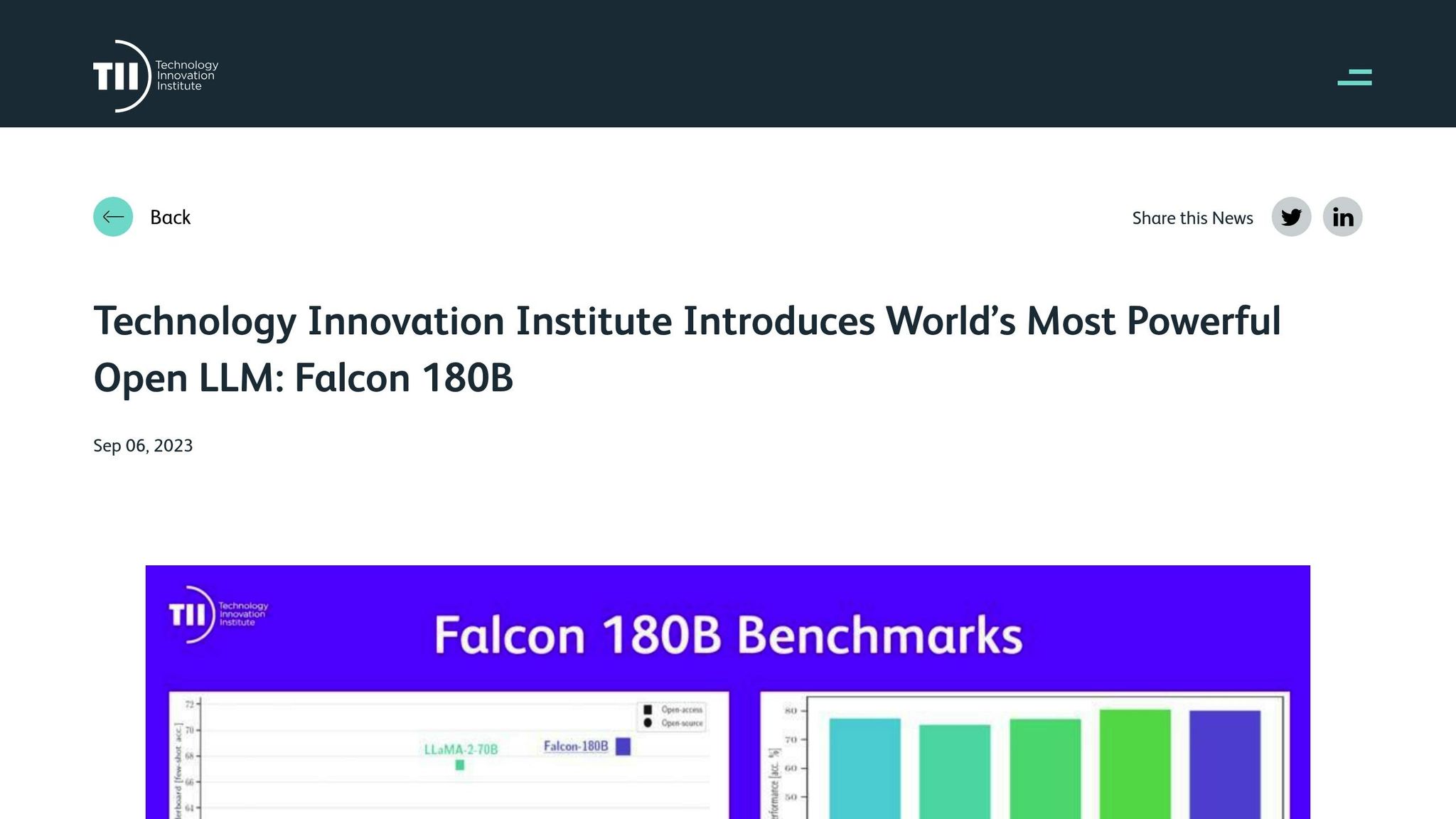
The Technology Innovation Institute's Falcon 180B is a heavyweight in the world of open-source language models, boasting a staggering 180 billion parameters. This immense scale unlocks powerful AI capabilities but comes with its own set of cost challenges, especially when compared to smaller models like LLaMA 3. Let’s dive into Falcon 180B's licensing, infrastructure needs, scalability, and community dynamics to better understand its cost implications.
Licensing Models
Falcon 180B operates under the Apache 2.0 license, which is known for its flexibility. Unlike LLaMA 3's custom license, Apache 2.0 allows for commercial use without the restrictions often tied to proprietary terms. This means organizations can freely modify, distribute, and integrate Falcon 180B into commercial products without worrying about attribution requirements or limits on creating derivative models. This permissive approach simplifies legal reviews and cuts down on compliance costs, making it a strong candidate for enterprises that prioritize clear and hassle-free licensing.
Infrastructure Costs
When it comes to hardware, Falcon 180B's size demands serious investment. Running the model requires at least 400GB of GPU memory for inference and roughly 360GB of disk space just for the base model. On top of that, you’ll need additional storage for optimization data, checkpoints, and caching. These requirements typically call for multiple high-performance GPUs like A100s or H100s, working in tandem.
Memory bandwidth is another critical factor. To keep inference speeds at an acceptable level, organizations often need advanced networking setups to handle distributed GPU operations. Whether opting for on-premises hardware or cloud-based solutions, these infrastructure needs translate to hefty upfront costs or ongoing operational expenses.
Scalability
Falcon 180B’s enormous parameter count introduces unique challenges when scaling. While techniques like parallelism can help manage its size, implementing these optimizations requires a high level of technical expertise. Additionally, multi-GPU setups often face extended warm-up times, making auto-scaling more expensive and less efficient.
To manage costs, some organizations turn to quantization, which can cut memory usage by up to 50%. However, this often comes at the expense of model performance, forcing a trade-off between cost-efficiency and maintaining the model’s capabilities. Many teams adopt hybrid strategies, using different precision levels for various parts of the model to strike a balance.
Community and Support
Although Falcon 180B is one of the largest open-source models available, its community remains relatively small. The high infrastructure costs required to run the model limit the number of contributors, which can make it harder to find community-driven solutions or resources. This often pushes organizations to rely on custom development or hire specialized consultants, driving up support costs.
While the Technology Innovation Institute provides documentation and some basic support, enterprise-level assistance usually involves third-party vendors or in-house expertise. For production environments where reliability and performance are non-negotiable, organizations should plan for additional training and consulting expenses to ensure smooth deployment and ongoing optimization.
3. Mixtral 8x22B
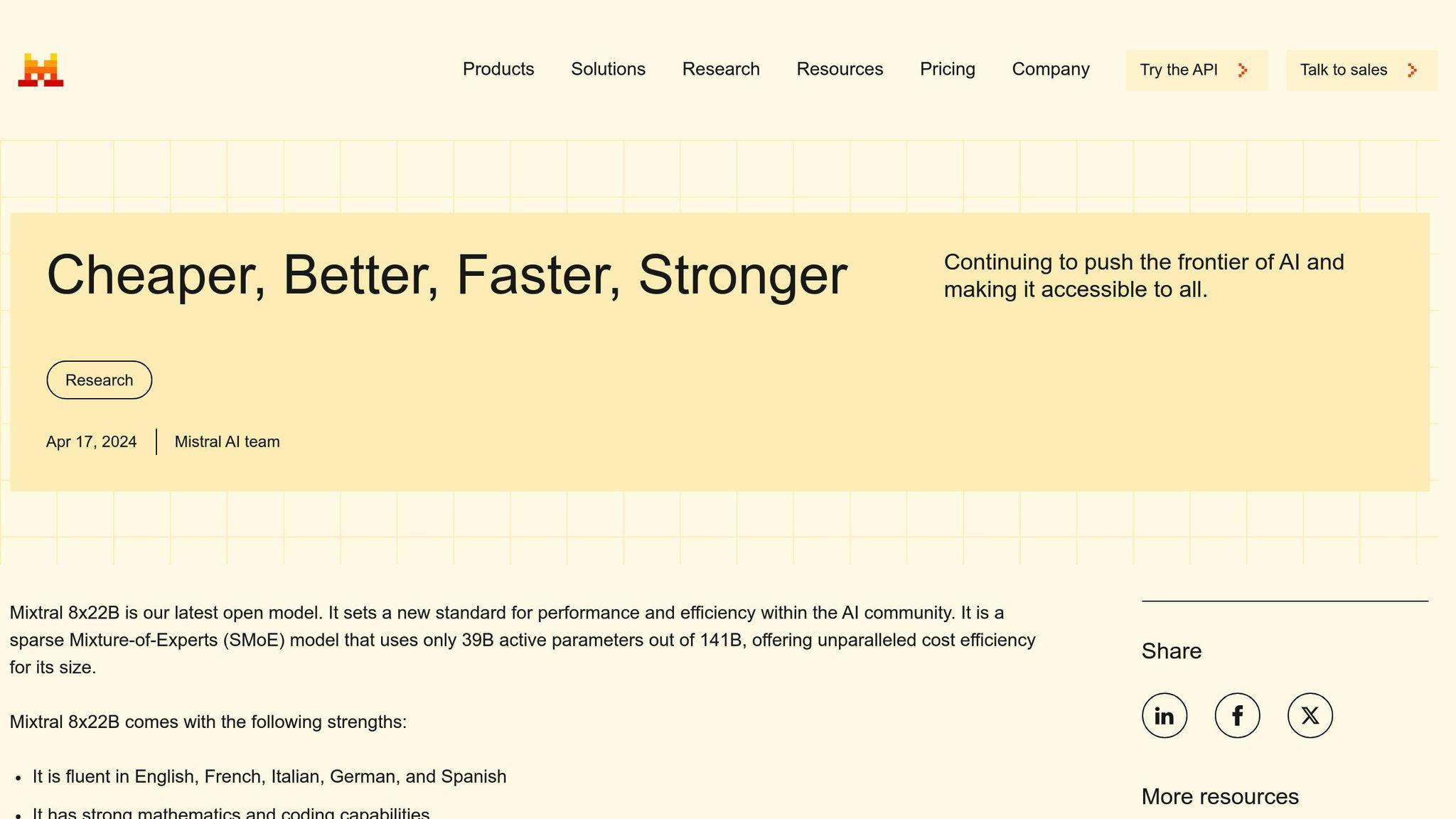
Mistral AI's Mixtral 8x22B is designed with a Mixture of Experts (MoE) architecture, which sets it apart from traditional dense models. While the model is large in size, only a portion of its parameters are active during inference. This approach delivers performance comparable to dense models but with reduced operational costs.
Licensing Models
Mixtral 8x22B is distributed under the Apache 2.0 license, which simplifies legal and commercial use. This license eliminates restrictive attribution requirements and ongoing fees, making it easier for organizations to integrate and deploy the model without unnecessary legal or financial complications.
Infrastructure Costs
The MoE architecture introduces a unique cost structure compared to dense models. Since only a subset of parameters is active during inference, peak memory usage can be lower, reducing some hardware demands. However, the model still requires substantial storage, and its routing mechanisms add extra computational complexity.
Deploying Mixtral 8x22B typically involves high-performance GPUs, though the exact setup depends on the workload. Some organizations have reported savings on inference costs, but these savings are largely influenced by how the model is optimized and used in practice.
Scalability
The MoE design also influences how Mixtral 8x22B scales. It allows for horizontal scaling, which can increase throughput, but careful load-balancing is essential. Certain "experts" within the model may see heavier usage depending on input patterns, which could impact performance if not managed properly.
For memory optimization, selective quantization can be employed to reduce resource usage without sacrificing performance. These strategies allow organizations to tailor their deployments to meet specific hardware capabilities and budget constraints.
Community and Support
Mistral AI has cultivated a growing community around Mixtral 8x22B. Developers and users are actively working on optimization techniques and deployment strategies, creating a collaborative ecosystem. While the community continues to evolve, Mistral AI provides thorough documentation to address common challenges. However, enterprise-level deployments often require additional expertise, whether through in-house teams or external consultants.
4. Yi-34B-Chat
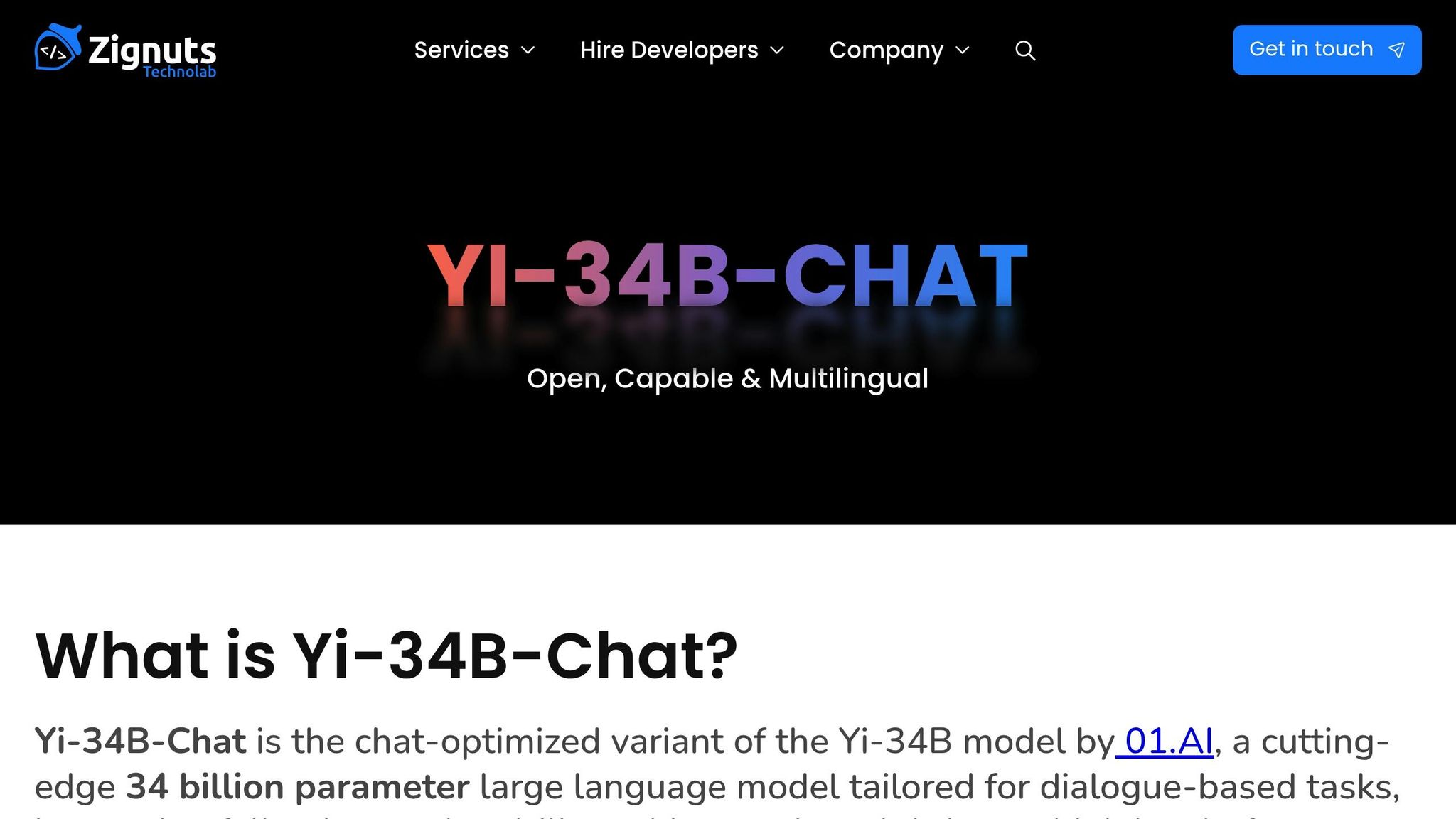
Yi-34B-Chat is next on our list, but publicly available information about it is quite sparse. Critical cost factors like licensing fees, infrastructure requirements, scalability, and support options are still unclear. As more reliable data becomes available, a detailed cost breakdown will be provided in future updates.
5. Mistral
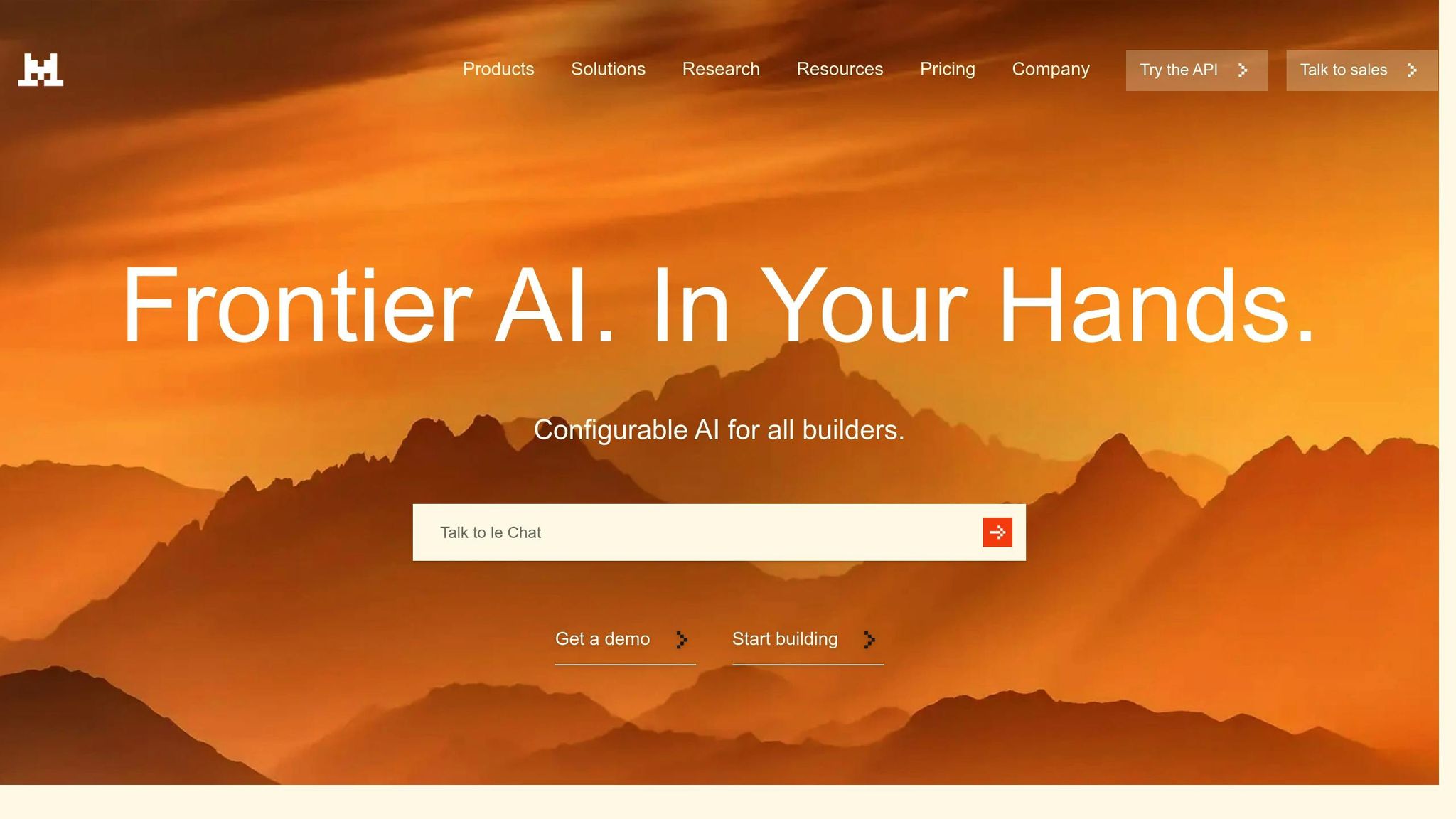
Mistral is an open-source large language model (LLM) framework designed with a focus on flexibility and efficiency. It uses a dual licensing system, offering both an open-source base model and commercial licenses for those needing additional support or customization options.
Licensing Models
Mistral’s licensing system provides two main options: an open-source license that allows broad commercial use and a commercial license for businesses looking for extra support or advanced tuning capabilities.
Infrastructure Costs
One of Mistral’s strengths is its ability to run efficiently on standard cloud GPU setups. This helps keep resource demands and deployment costs manageable.
Scalability
The framework is built to handle horizontal scaling, which means it can adjust computational resources as needed. This dynamic approach helps businesses control operating expenses.
Community and Support
Mistral benefits from a strong developer community, thorough documentation, and regularly updated resources, all of which make deployment and tuning more straightforward. For those with commercial licenses, dedicated technical support is also available to address specific needs.
Framework Comparison: Benefits and Drawbacks
Building on the cost factors discussed earlier, the table below highlights how each framework stands out in terms of licensing, setup, operational expenses, scalability, and support.
| Framework | Licensing | Upfront Costs | Ongoing Costs | Scaling Considerations | Support |
|---|---|---|---|---|---|
| LLaMA 3 | Custom research license with commercial restrictions | Low setup fees but may need additional licensing reviews for enterprise use | Higher operational costs due to the need for powerful GPU clusters | Limited by hardware and memory constraints | Strong community support but no official vendor backing |
| Falcon 180B | Apache 2.0 offering broad commercial freedom | Requires enterprise-grade infrastructure | Substantial computational resource demands | Supports horizontal scaling but remains resource intensive | Active community; limited formal commercial support |
| Mixtral 8x22B | Apache 2.0 with efficient mixture-of-experts architecture | Moderate setup with specialized hardware requirements | Costs vary due to dynamic resource allocation | Intelligent resource management enables effective scaling | Growing community with emerging commercial partnerships |
| Yi-34B-Chat | Apache 2.0, permitting unrestricted commercial use | Low to moderate costs with standard cloud deployments | Balanced performance keeps ongoing costs moderate | Scales reliably with reasonable resource usage | Smaller but dedicated community; limited enterprise support |
| Mistral | Dual licensing blending open-source and commercial options | Low costs with efficient deployment on standard hardware | Optimized resource usage keeps operational costs moderate | Excels in horizontal scaling with cost-effective operations | Robust community with additional commercial support options |
The table provides a snapshot of how each framework handles cost-related factors. Below, we break down these aspects further to understand their implications for deployment.
Licensing and Legal Flexibility
Licensing plays a pivotal role in determining how a framework can be used commercially. For instance, LLaMA 3's custom license imposes restrictions, making it less flexible for enterprise applications. On the other hand, frameworks like Falcon 180B and Yi-34B-Chat, licensed under Apache 2.0, offer more freedom for commercial use without the need for extra legal reviews or compliance hurdles.
Infrastructure and Operational Costs
Infrastructure efficiency is key to managing ongoing expenses. Models like Mistral are optimized to run on standard GPU configurations, which can help cut down on hardware and energy costs. In contrast, Falcon 180B requires enterprise-grade infrastructure and continuous high-end GPU usage, making it costly to operate. Meanwhile, the Mixtral 8x22B framework uses a mixture-of-experts architecture, activating only the necessary components during inference. This dynamic approach can significantly reduce computational expenses compared to traditional dense models.
Scaling and Performance
Scalability is another critical consideration. Models like Mixtral 8x22B and Mistral shine in this area, with intelligent resource management and effective scaling capabilities. These features allow them to adapt to varying workloads without incurring excessive costs. On the other hand, Falcon 180B, while powerful, demands substantial resources, which might strain budgets, especially for smaller organizations.
Support and Community Resources
Support availability can impact both development time and operational complexity. Frameworks like Mistral benefit from a robust community and additional commercial support, offering smoother transitions from experimentation to production. In contrast, models like Yi-34B-Chat rely on smaller, more niche communities, which may require organizations to invest in in-house expertise or external consulting services.
Hidden and Long-Term Costs
Beyond the obvious expenses, there are hidden costs to consider. Licensing models that require periodic legal reviews or compliance checks can add to the overall cost. Similarly, frameworks with high computational demands, such as Falcon 180B, may lead to unpredictable cloud charges during periods of peak usage.
Balancing Cost and Usability
When assessing the total cost of ownership, it's essential to factor in both direct expenses, like infrastructure, and indirect ones, such as developer productivity and maintenance. For example, Mistral's dual licensing model offers a more predictable path from open-source experimentation to enterprise-grade deployment, making it easier to scale costs as needs grow. By carefully evaluating these factors, organizations can choose a framework that aligns with their budget and operational requirements.
Conclusion
For small to medium-sized businesses, frameworks like Mistral and Yi-34B-Chat strike a balance between affordability and performance. These models can run efficiently on standard hardware, making them a practical choice for everyday tasks without breaking the bank. On the other hand, enterprise organizations with more intricate requirements might benefit from Mixtral 8x22B, which uses advanced resource management to handle complex environments while potentially cutting costs. However, if you're considering Falcon 180B, be prepared for higher hardware expenses due to its robust capabilities and resource demands. These distinctions highlight the importance of conducting tailored cost assessments.
When it comes to LLaMA 3, its custom licensing terms may require additional legal scrutiny, adding another layer of consideration for businesses.
Cost management isn't just about choosing the right model - it's also about optimizing infrastructure. Using cloud auto-scaling and fine-tuning models with smaller, task-specific datasets can help reduce operational expenses and computational overhead, making deployments more efficient.
Collaboration within teams is another critical factor in managing costs effectively. Disorganized workflows can slow down production and drive up labor expenses. Platforms like Latitude simplify collaboration between domain experts and engineers, helping streamline the development and upkeep of production-ready language model features. This approach minimizes costly trial-and-error cycles and supports more efficient deployment strategies.
Finally, remember that the total cost of ownership goes beyond just infrastructure and licensing. Ongoing developer training, maintenance, and future scaling are equally important when considering long-term value. While a cheaper option might seem appealing initially, higher upfront investments often lead to better returns over time.
FAQs
What should small businesses consider when comparing Mistral and Mixtral 8x22B for cost efficiency?
When choosing between Mistral and Mixtral 8x22B, small businesses should weigh three main factors: licensing costs, scalability, and infrastructure requirements.
Mistral stands out for its budget-friendly pricing, with rates ranging from $1.80 to $2.50 per million tokens. This makes it a solid choice for businesses that prioritize keeping costs low while maintaining transparency.
In contrast, Mixtral 8x22B delivers top-tier performance and efficiency, particularly for businesses needing rapid scaling and a more robust infrastructure. Although it demands higher upfront investments in infrastructure, its autoscaling capabilities can minimize downtime and boost operational efficiency.
The decision ultimately hinges on your business priorities: Mistral’s affordability might be the better fit for cost-conscious operations, while Mixtral’s performance benefits could justify the extra infrastructure investment for those seeking scalability and efficiency.
What are the licensing restrictions of LLaMA 3, and how do they affect its use in enterprise settings?
The licensing terms for LLaMA 3 play a crucial role in shaping how it can be used in enterprise settings. A notable restriction is that neither the model itself nor its outputs can be used to train other AI models. This limitation could hinder a company’s ability to customize or refine the model for specific needs. On top of that, businesses must adhere to all relevant laws and regulations, which can add layers of complexity, especially when deploying LLaMA 3 on a larger scale.
These constraints may lead to increased legal and operational challenges, potentially reducing the flexibility and scalability for companies aiming to incorporate LLaMA 3 into their systems.
What are the hidden costs of deploying Falcon 180B, and how can they be managed?
Deploying Falcon 180B isn't just about setting it up - it comes with hefty hidden costs, largely due to its demanding hardware requirements. For starters, you'll need at least 400 GB of memory just for inference, along with substantial GPU power. This level of infrastructure can easily rack up expenses in the tens of thousands of dollars. On top of that, operational costs like electricity, cooling systems, and regular maintenance can quickly pile up.
To keep these expenses in check, there are a few smart strategies to consider. For example, you could focus on optimizing hardware usage to avoid waste, explore cloud-based solutions with flexible pay-as-you-go pricing plans, and ensure you're actively monitoring resource utilization. These approaches can help strike a balance between managing costs and maintaining performance and scalability.
